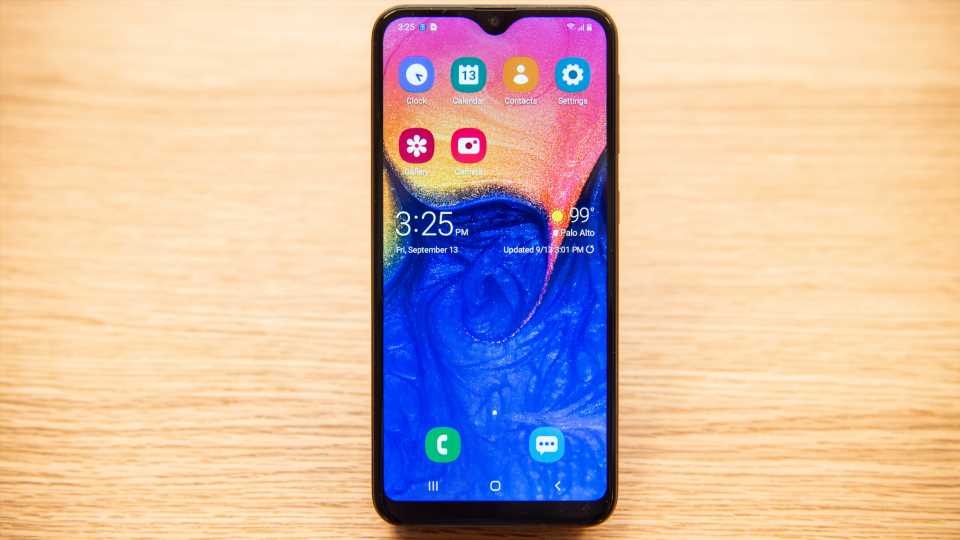In today’s world, owning a smartphone is not so much a rite of passage as it is a standard for kids. A recent Pew Research Center survey found that 95% of teens have a smartphone or can readily access one, making them the most tech-savvy and well-connected generation yet. But such easy access to the internet and social media comes with its own host of issues, including an increased risk of online bullying, mental and emotional health problems, and an unhealthy attachment to screens — all of which Gabb Wireless, the first company to provide phones and a network exclusively designed for kids, aims to combat.
Gabb, which announced its nationwide rollout for its phones and network this week, claims to be the premier safe network for young kids and teens. Gabb’s phones stick to the basics, offering call and text options with a limited number of pre-installed apps, including a camera, a calculator, a calendar, and FM radio. And while neither of Gabb’s phones or usage plans offers an internet browser or an app store, its products resemble popular smartphones on the market.
“I wanted [the phones] to look and feel… just like a smartphone because I don’t know if you remember what it’s like to be 12, or 13, or 14, or 15, but these kids are mortified when their parents give them flip phones,” Gabb founder and CEO Stephen Dalby told SheKnows.
Gabb currently offers two phone models: Gabb Z1, manufactured by ZTE; and Gabb S1, manufactured by Samsung and available on October 15. At $99, the Gabb Z1 is the more basic model, featuring a five-inch screen, a five-megapixel back camera, a two-megapixel front camera, and 32GB of expandable memory. Gabb S1 is a bit more sophisticated, with a nearly six-inch screen, an eight-megapixel front camera, a five-megapixel back camera, Bluetooth capabilities, and 512GB of expandable memory; it retails for $199.99. Both phones run on a leading 4G LTE provider.
The company also offers two usage plans, Gabb Basic and Gabb Plus. The Basic option, which is available now, comes with unlimited calls and text and costs $19.99 per month. As with the S1, the Plus plan offers a bit more, with unlimited calls and text, picture messaging, and group text capabilities; it costs $22.99 per month and will be available soon. Neither plan requires a contract.
It was critical to Dalby that both the phones and the plans were simple. As a parent of teens, Dalby said he’d exhausted “30-40 hours of research” looking for “age-appropriate” options that were safe as well as reasonably priced. Ultimately, none of the options on the market seemed worth it; even with parental controls, every phone allowed far too much access to the internet and social media apps. To top it all off, the phones and plans were exorbitantly priced. “It was just a really painful experience,” he said.
Keeping kids safe online is a growing concern for many parents, and rightly so. A recent study published in JAMA Psychiatry found that teens who spend more than three hours a day on social media were at a higher risk of mental and emotional health issues. These findings were consistent with a 2018 study published in Preventative Medicine Reports which found that kids ages 2-17 who spent more than an hour a day using screens had “lower psychological well-being” than those who didn’t. The same study found that teens who had seven or more hours of screen time were twice as likely to have depression and anxiety. These findings are concerning, especially since 71% of teens reported that they use one or more social media platforms regularly, according to the Pew Research Center.
Additionally, the World Health Organization recommends reduced screen time — including time spent on mobile devices, in front of gaming systems, and watching TV — for kids of all ages, as it could cause developmental delays.
“The evidence is clear, children who are consistently exposed to screens and excessive social media are suffering,” Collin Kartchner, national social media activist and founder of Save the Kids, said in a Gabb Wireless press release. “Whether it’s FOMO, anxiety, or exposure to predators, we owe it to our children to create safe ways for them to adopt mobile technology and content in ways that are better suited to their age and maturity levels.”
https://www.instagram.com/p/B2VAbRcBKxS/
Dalby says one of his objectives with Gabb is to teach kids about responsible technology use and to hold them accountable for the ways they interact via text messaging. He says parents can do this by first introducing kids to the Gabb Basic plan. Once kids have proven they’re more mature, Dalby suggests graduating to the Gabb Plus plan, where kids can enjoy group messaging and send photos. Ultimately, Dalby says he hopes that Gabb phones will prepare kids for their inevitable online usage.
So far, Dalby says both kids and parents have embraced Gabb phones.
“The feedback we’re getting is really positive,” he said. “It’s really positive from the kids because they’re excited to get the phone. It’s really positive from the parents because they just don’t need to worry about [kids accessing harmful apps or websites].”
Gabb’s goals are ambitious, and its mission to reduce the number of hours kids spend online will be hard-fought. But it’s a challenge Dalby and his team are happy to take on, starting in their own homes.
“The same phones that we’re selling at Gabb Wireless are the same phones that my children are using,” Dalby said. “There’s never going to be a phone on this network that’s not safe for kids.”
Source: Read Full Article

